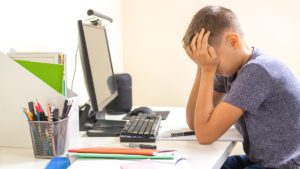This should come as a surprise to no one – literally no one – but three years of distance learning, remote learning, and hybrid classrooms has been costly to our students.
Test results from the National Assessment of Educational Progress (NAEP) – better known as the nation’s report card – were released, and they reflect significant setbacks for America’s students. Students’ academic progress slowed dramatically during the pandemic, and the post-pandemic academic recovery looks as big, and maybe bigger than we had thought.

“It should not come as a surprise, not only given the data we have seen, but also given basic expectations, that in-person school is good for students and their test scores,” noted Nat Malkus, American Enterprise Institute Senior Fellow. “If anything, it is surprising the influence is not more evident here. For the work of getting students caught up from these declines, it is not helpful to re-litigate debates over school closures (though they may be worth re-litigating for other purposes).
“However, the work of getting students caught up should not be pursued by ignoring those closures, and their influence on what students are facing today.”
The bad test score news hits home right here in Minnesota. From the Star Tribune:
“Minnesota eighth graders last spring registered their worst scores on national exams in 30 years and fourth graders performed significantly worse in both math and reading than they did three years ago, according to data released Monday.
“That slide, based on figures from the National Assessment of Educational Performance, “continues trends that we have seen beginning in 2017, prior to COVID,” said Kevin Burns, spokesman for the Minnesota Department of Education.
“We expected declines, given the disruption everyone experienced during the pandemic, but that doesn’t make these results easier to see,” he wrote in an email. “While Minnesota student scores outpace national scores, we must work diligently to take the necessary steps to help all students, across all grades, achieve.”




